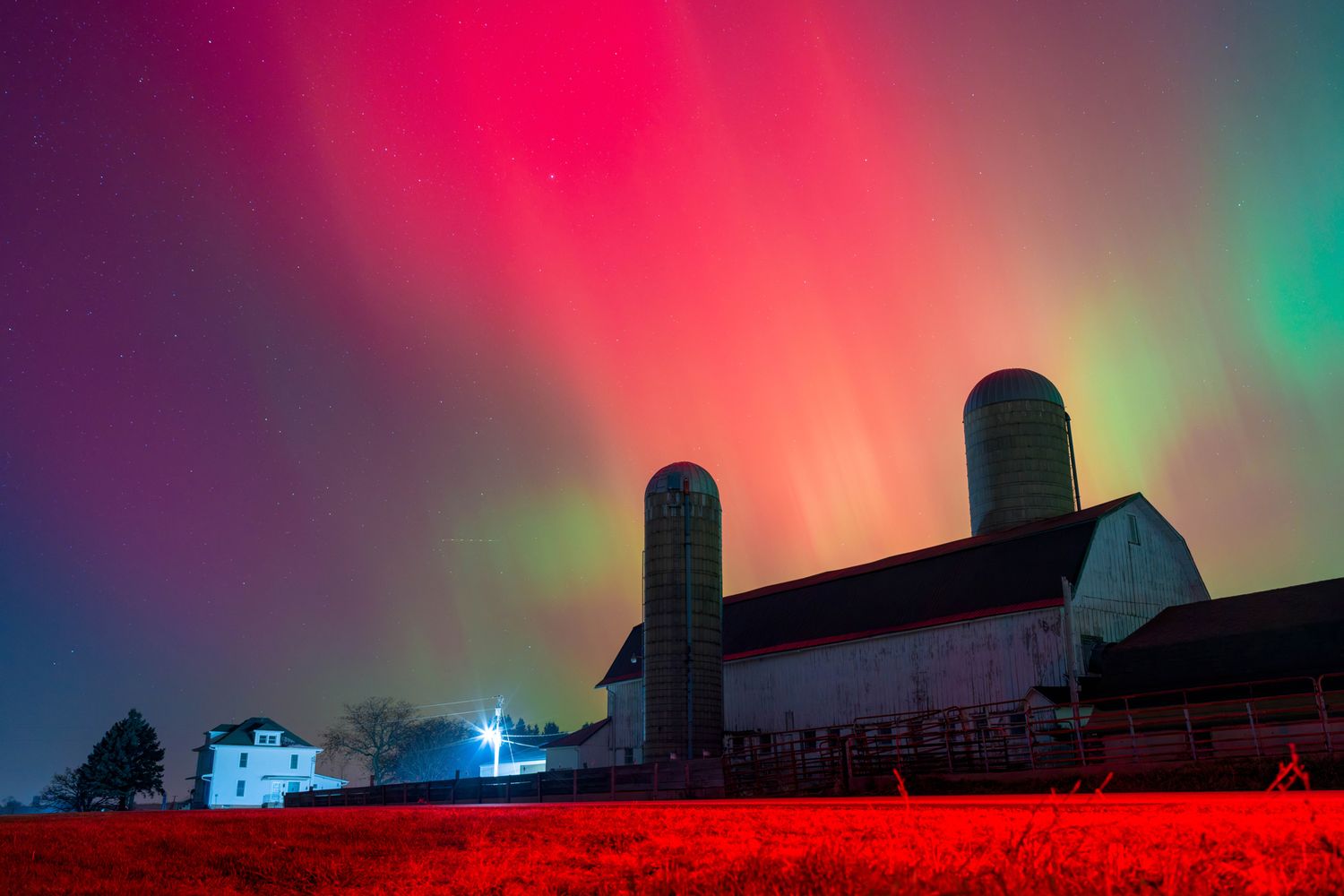NEED TO KNOW
The northern lights may be visible in parts of the northern U.S. and Canada on Nov. 25 as a geomagnetic storm is expected to develop after darkAn unusually active stream of solar wind is boosting aurora chances, potentially allowing the lights to dip farther south than they typically doClear, dark skies give viewers the best chance of spotting the aurora, and real-time alerts or aurora apps can help track visibility as conditions change
The northern lights might be putting on a rare show tonight, and the best part is you don’t have to travel to Iceland or Norway to witness it!
A stream of unusually turbulent solar wind is currently sweeping past Earth, stirring up the kind of geomagnetic activity that can turn an ordinary November night into a full-blown cosmic event.
The aurora borealis (northern lights) is caused by geomagnetic storms, which occur when charged particles from the sun collide with gases in Earth’s atmosphere, creating brilliant waves of light in the sky.
Just so you know, this is happening without a dramatic solar flare or coronal mass ejection, just a wilder-than-usual gust of charged particles dancing through our atmosphere.
According to NOAA’s Space Weather Prediction Center, conditions are lining up for a G1 geomagnetic storm on Tuesday, Nov. 25, meaning the aurora could dip farther south than normal if the energy intensifies.
For sky-watchers (or anyone who’s ever wanted to look up and see colorful ribbons shimmer across the northern horizon), tonight could be one of those moments where you have to stop everything you’re doing to step outside and look up.
Here’s everything you ned to know about this stellar event.
When will the northern lights be visible?
Aurora borealis.
Andrew Chin/Getty
Are you ready, stargazers?
Auroras will be visible after dark on Tuesday, Nov. 25, with activity stretching into the early hours of Wednesday, Nov. 26.
NOAA is forecasting a G1 (Minor) geomagnetic storm, fueled by a fast and rowdy stream of solar wind coming from a positive-polarity coronal hole. Expect unsettled or active conditions through the night and into the next morning.
Where will the northern lights be visible?
The Northern Lights are seen in Sugarloaf Key.
Jen Golbeck/SOPA Images/LightRocket via Getty
NOAA’s latest viewlines show that up to 15 northern U.S. states could see the aurora glow along their northern horizons, including Alaska, Washington, Idaho, Montana, Wyoming, North Dakota, South Dakota, Minnesota, Iowa, Wisconsin, Michigan, New York, Vermont, New Hampshire and Maine.
How to watch the northern lights?
Northern Lights or Aurora Borealis.
Getty
Remember, aurora hunting is a waiting game as the lights often appear suddenly. Allow your eyes to adjust for about 30 minutes.
Steer clear of city lights as light pollution washes out everything. Use a Dark Sky Finder or light-pollution map to locate the darkest northern view you can.
Also, check real-time alerts such as NOAA’s 30-minute aurora forecast or apps like Aurora Now, My Aurora Forecast and Glendale Aurora.
How to take photos of the northern lights?
Remember, patience goes a long way! Besides, you can’t catch a rare glimpse of the northern lights without taking a photo to prove it.
The good news is your smartphone will do the trick. Just switch on Night Mode in your settings and aim your lens at the sky.
However, for those with more advanced gear, like a DSLR or mirrorless camera, use a tripod and shoot in manual mode for the best results.

